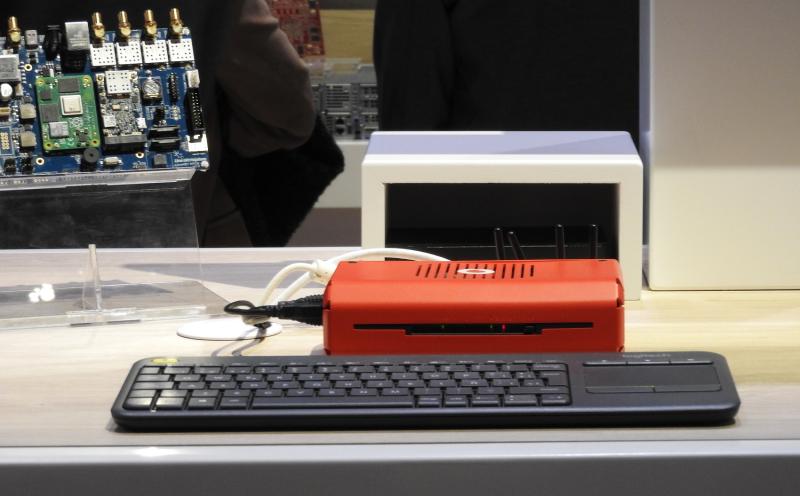BARCELONA—When Vodafone announced a prototype of a 5G network-in-a-box about 10 days ago, it sounded a little incredible.
Really, an entire 5G standalone (SA) network in a box that’s the size of a Wi-Fi router?
Indeed, that's how it's being pitched, and it’s on display at Vodafone’s booth in Hall 3 during MWC 2023. By the looks and sounds of things, it’s gathering quite the attention.

Since it was announced in London, Santiago Tenorio, Vodafone’s director of Network Architecture, said he’s been getting about 100 requests a day from people who want to buy it.
He tells these people that it’s just a prototype and would cost a lot of money, maybe $2,000, if they went that route. And guess what? They say: “I want 10 of them,” he said.
Vodafone, which developed the network with U.K. startup Lime Microsystems, isn’t producing the boxes in mass quantities, but more on that later.
Right now, the interest is more than they expected. “We thought it was cool but the demand for it – it’s gone out of proportion,” Tenorio said.
The prototype ticks a few boxes for Vodafone. For one thing, it uses Raspberry Pi, which sends the right message about affordability and democratizes the technology, he said. Plus, Raspberry Pi has an ecosystem of developers.
“Once you prove that you can run a 5G network on Raspberry Pi, let’s be honest, then you can run it anywhere,” and it just moves up from there in terms of capacity and computing power, Tenorio said. “I think that’s the beauty of the solution. If you can squeeze an entire 5G network into Raspberry Pi, then it’s clear you can do so much more in bigger platforms.”
The outer casing of the network-in-a-box was created using a 3D printer. At the core is a software defined radio (SDR) and it’s 5G SA, he said. The board design is compliant with open Radio Access Network (RAN) standards, and the cost of the final box is similar to the cost of a Wi-Fi router.
And who’s going to use it? Tenorio said it’s kind of like the grandson to the femtocell that was offered in the industry years ago. It can be used to provide coverage in a home that doesn’t currently have decent internet, like a house in the country, or by any entity that doesn’t have adequate coverage.
It also addresses the gap for those people who just want their own private network for IoT purposes or for some other business. The private network offerings currently on the market are complex and too expensive, he said.
“There is no simple, affordable solution to democratize that space and that I think is part of the success of why everybody wants it,” he said. Previously, an enterprise could get a private networking solution from an Ericsson or Nokia, but that’s big and expensive, and not the kind of thing the normal business owner wants to buy.
“We’re not mentioning names, but there are some big companies that want it deployed,” he said, such as in a manufacturing plant, including those that are outside of Vodafone’s telco footprint, which includes the U.S.
Because it’s based on software defined radio, it can be a 4G or 5G network, Wi-Fi or something else, he said. It’s capable of transmitting on any spectrum. The box that was shipped into Barcelona was reconfigured to work at 2600 MHz, he said.
Vodafone first met the team at Lime about seven years ago and they clicked because they shared a similar vision, he said.
So, will they brand it Vodafone and sell it? “I think we passed the point of no return. The demand is clearly there. People are asking for it,” he said.
They’ll continue to show it off to people throughout the MWC 2023 trade show and when the show is over, they’ll go to the white board and consider how they want to proceed in creating the product in more volume.
He sees it as a way of unleashing the full power of a radio that can be configured for whatever is best for the customer in a cost-optimized way. “This is bigger than mobile private networks,” he said.
